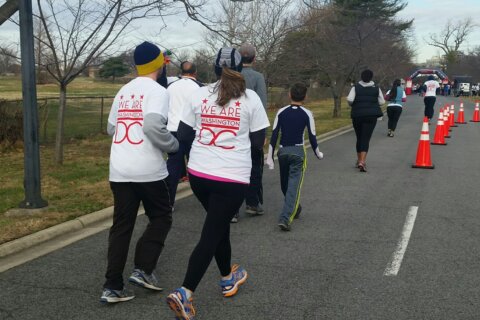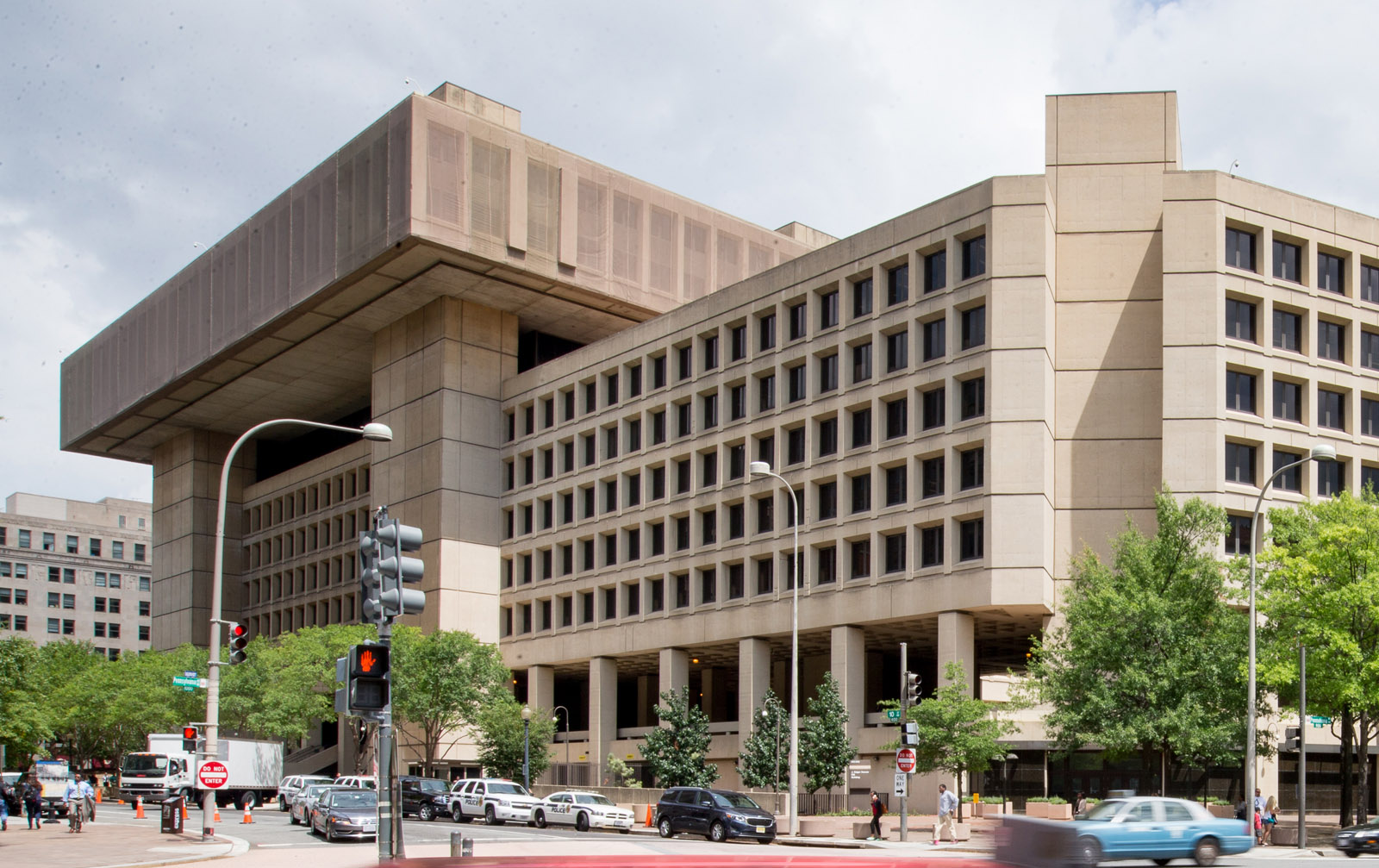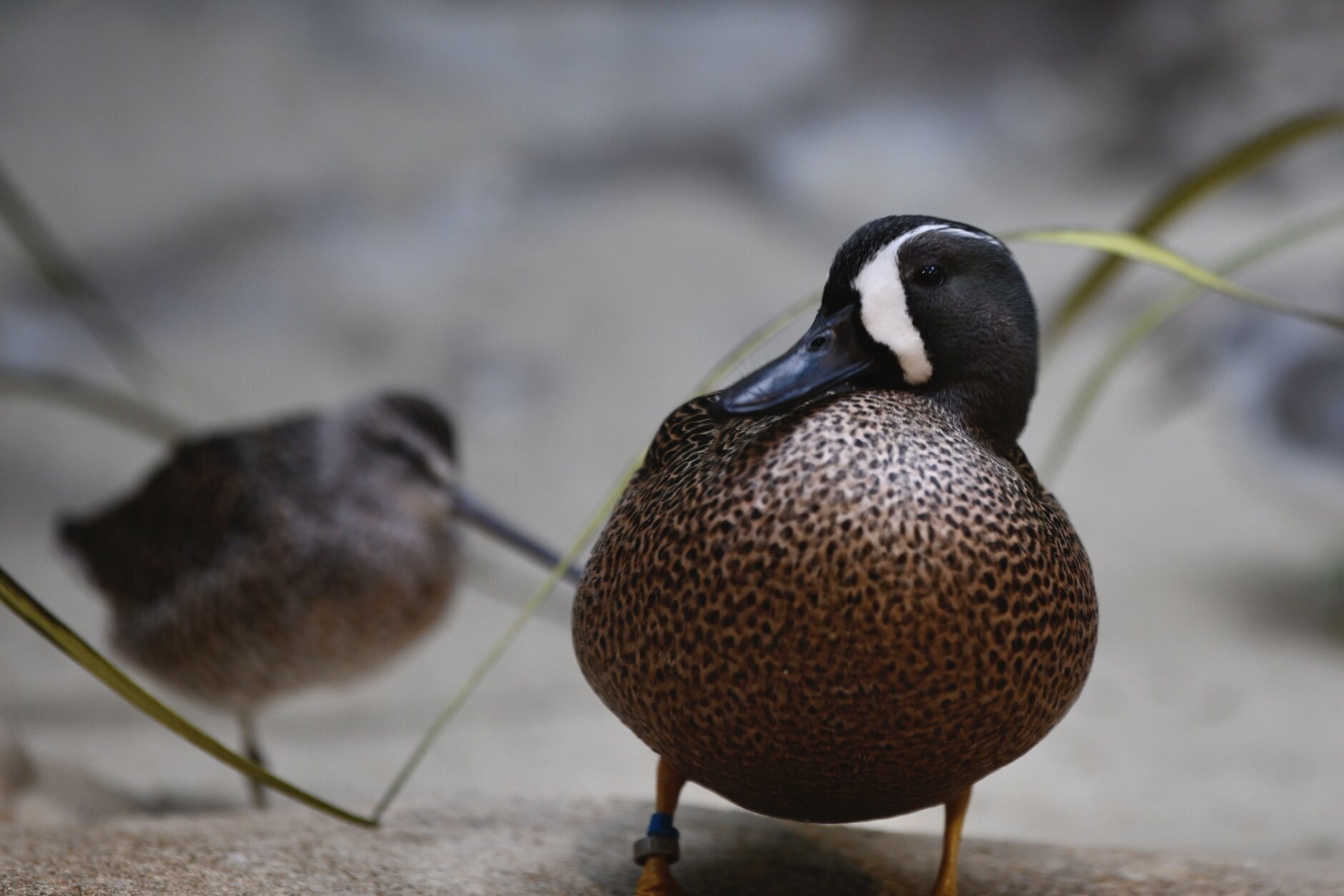
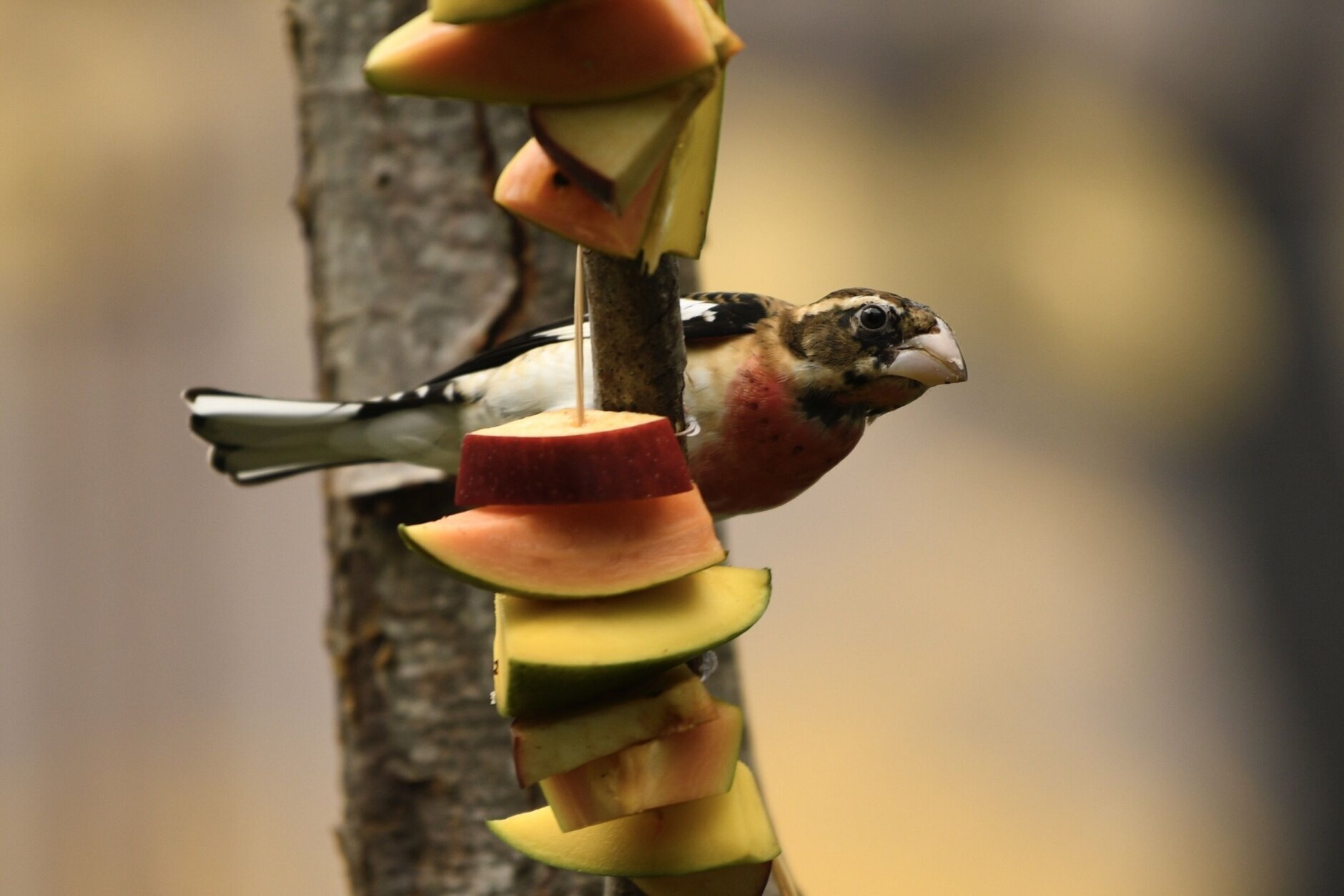
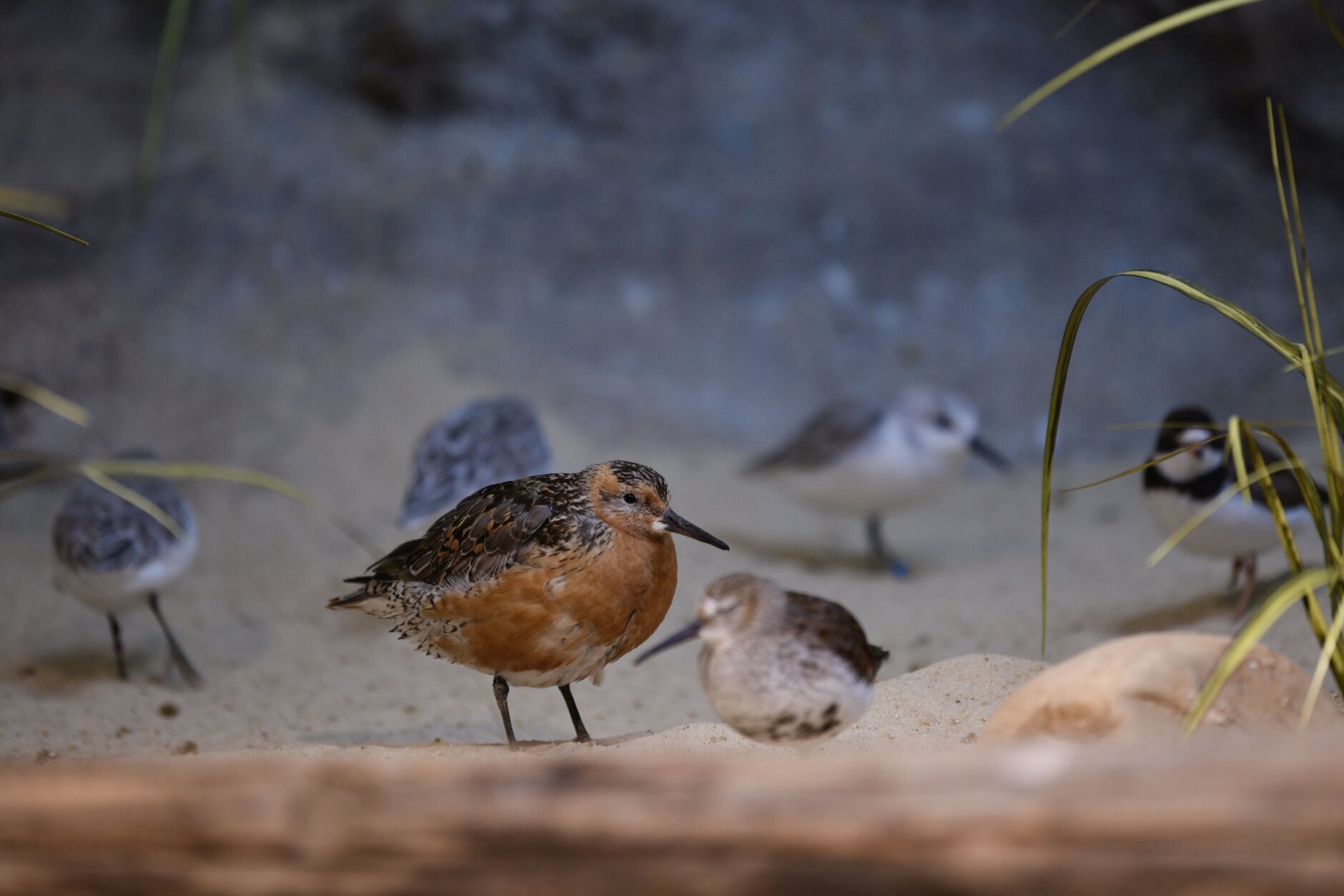
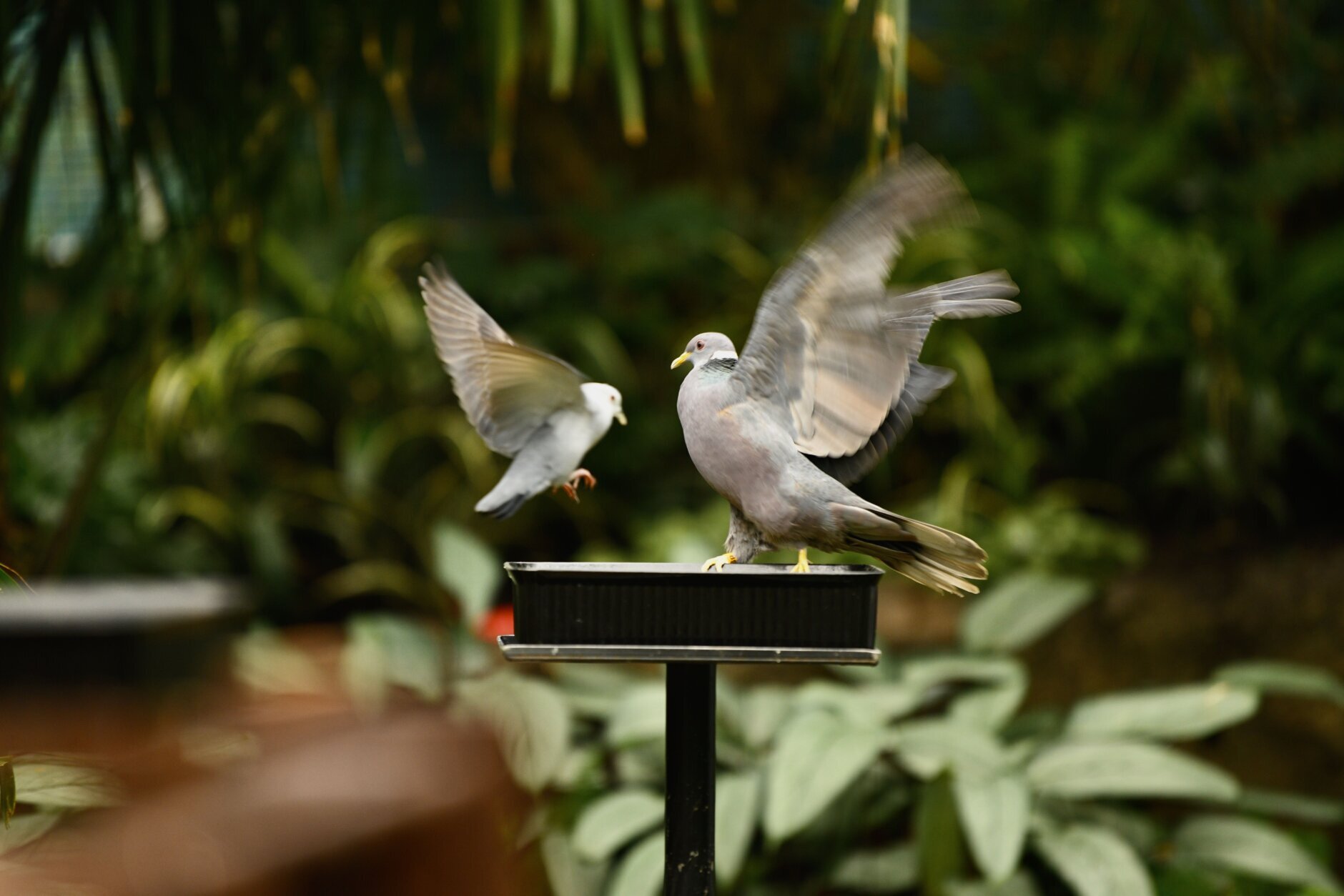
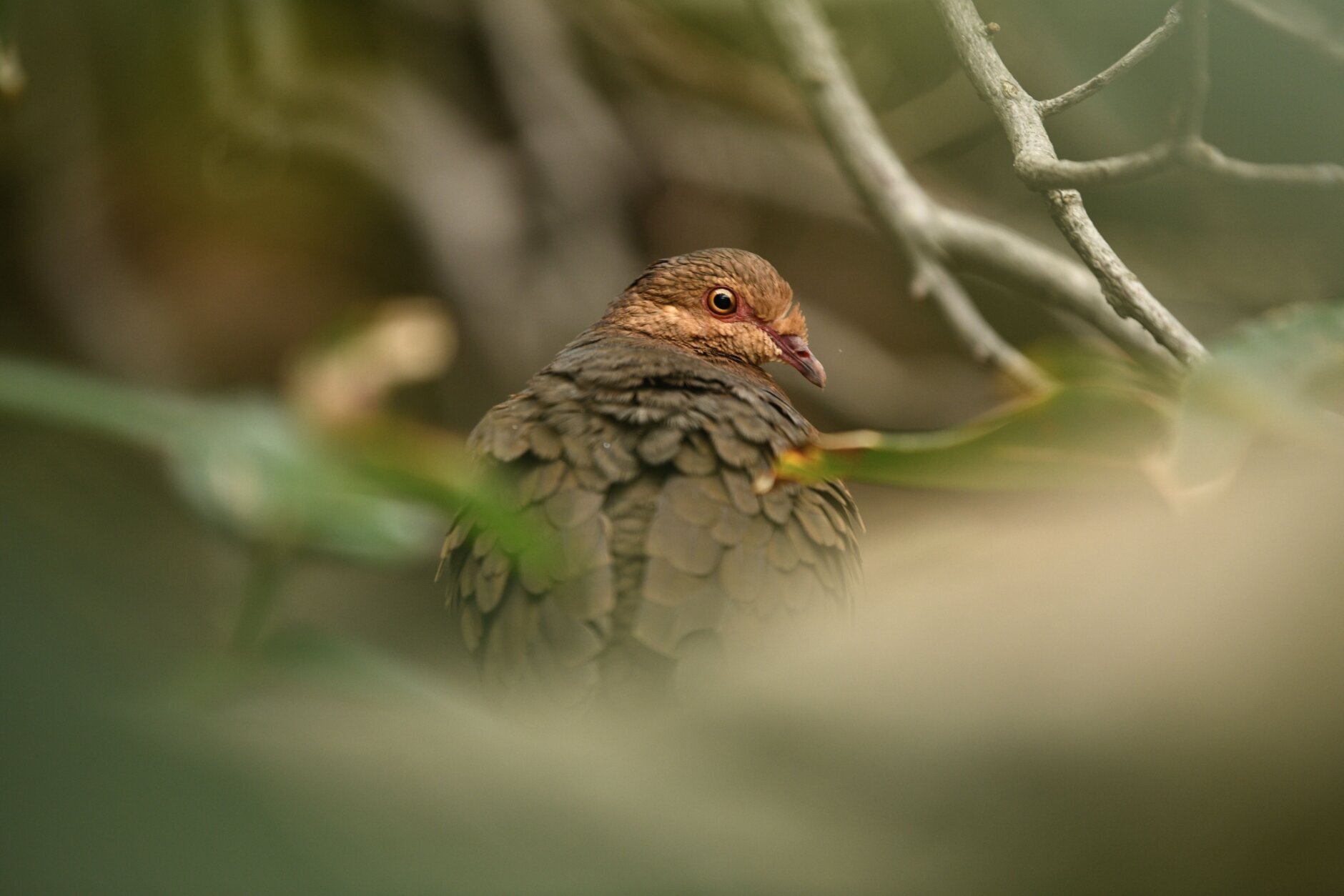
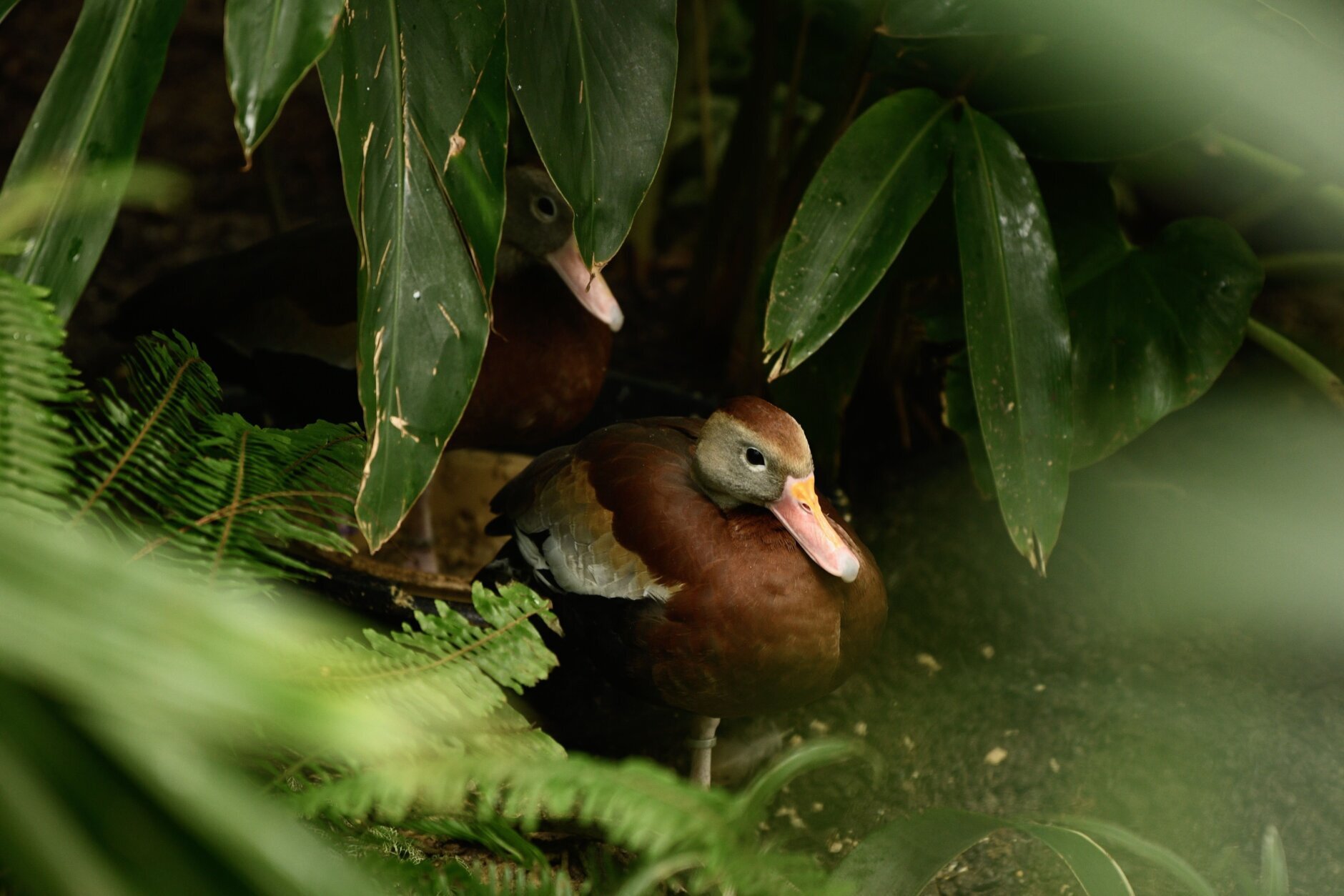
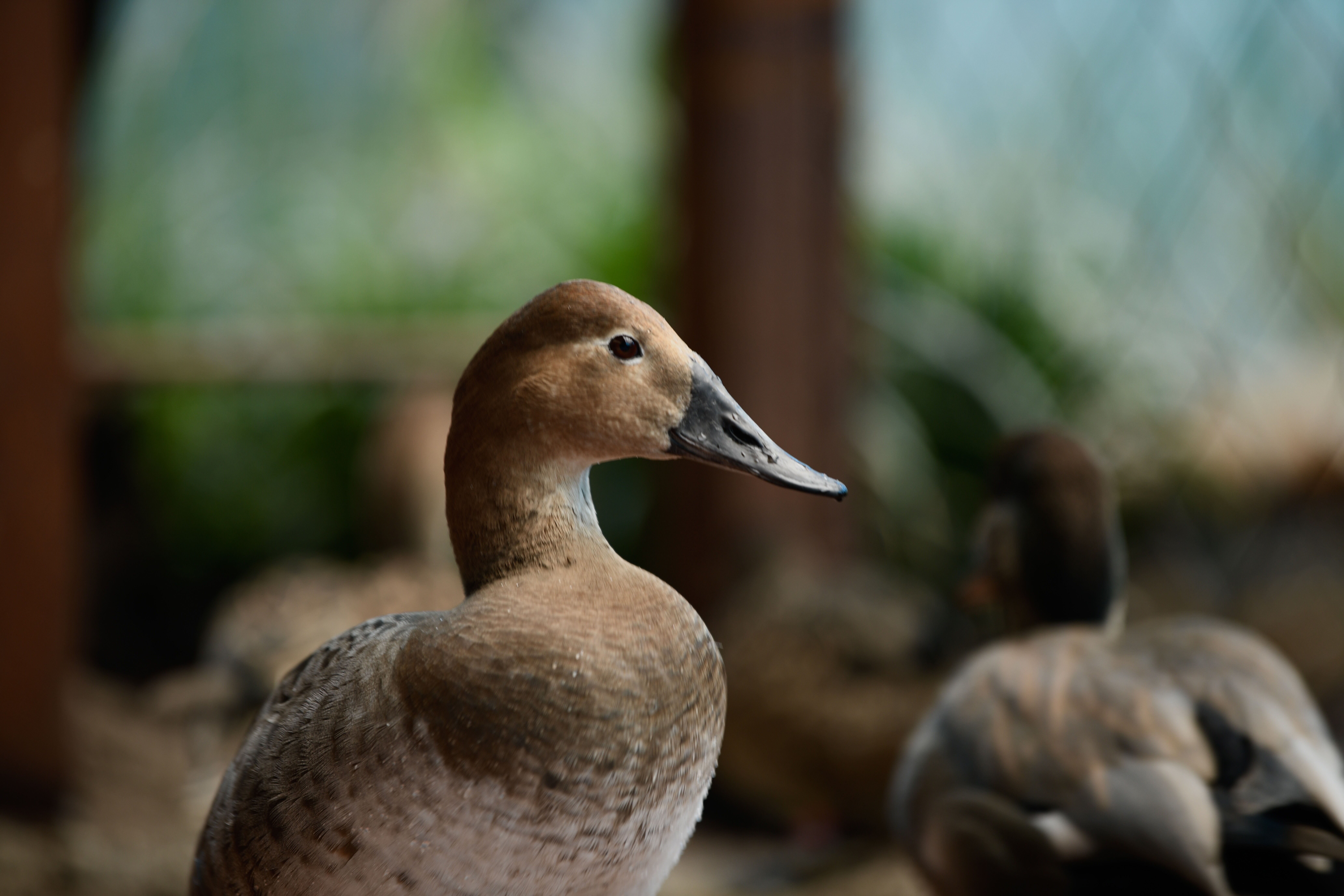
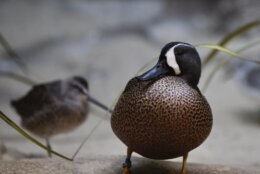
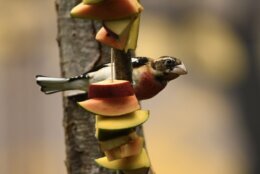
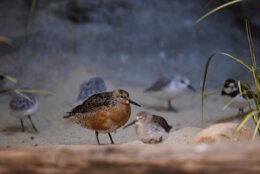
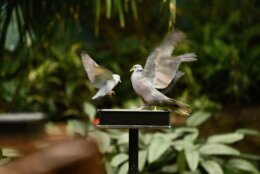
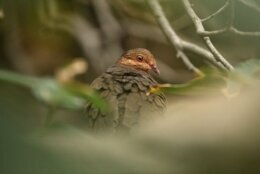
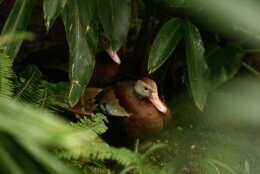

Visitors to Northwest D.C.’s Smithsonian National Zoo will be able to walk among 56 different species of birds at the newly-renovated Bird House, starting March 13.
The Bird House closed for renovations in 2017, and the reopening will spotlight migratory birds and the many roles they play — from pollination and pest control, to seed dispersal of native plants and commercial crops.
The aviaries take visitors through different habitats: From the Delaware Bay, where they can see a variety of shorebirds along with the horseshoe crabs that are a vital part of that ecosystem, to the Prairie Pothole region of the northern Great Plains, to an aviary that mimics the tropical setting of a bird-friendly coffee farm.
Sarah Hallager, curator of birds with the National Zoo, pointed out the variety of shorebirds and waterfowl in the Delaware Bay aviary. From the red knot, which migrates more than 9,000 miles each year from Tierra del Fuego in South America to the Canadian Arctic, to others, including ruddy turnstones, sanderlings, semipalmated plovers and more.
“These are all species of shorebirds that you would see during migration in May,” but in the aviary, you see them up close, Hallager said.
This video is no longer available.
The Prairie Pothole habitat is home to a number of ducks — diving ducks, dabbling ducks and some songbirds, as well.
Jennifer Ferraro, a keeper with the National Zoo, said that the Plains region habitat is often referred to as “the duck factory,” because “90% of all duck species all breed there.”
Without that particular habitat, “We lose a lot of the native duck species that we see migrate through this area each year,” she said.
Another portion of the Bird House is built to create the tropical home of a number of species that many North American residents think of as their backyard birds.
The bird-friendly Coffee Farm aviary is stocked with binoculars for visitors.
“The cool thing about migratory birds, like catbirds, like the red-eyed vireo there,” research wildlife biologist Scott Sillett said, pointing to some of the songbirds flitting through the aviary.
“Yes, they come through our neighborhoods, but they’re tropical birds. They just come here to breed” in the spring and summer,” added Sillett, who is the head of the Migratory Bird Center.
The binoculars will help people see the birds up close and not just “specks in a tree,” Sillett said.
In the spring and summer, D.C. region residents could see as many as 20 different species of warblers in a single day.
“It’s a springtime treasure hunt every year,” Sillett said.
In each area, visitors will find informational panels in English and Spanish. For the first few months, visitors will need free, timed-entry passes. That will help manage crowd flow as the birds acclimate to people moving through their habitats. Same-day passes will be available at the zoo.
Find out more by visiting the Bird House Exhibit website.


